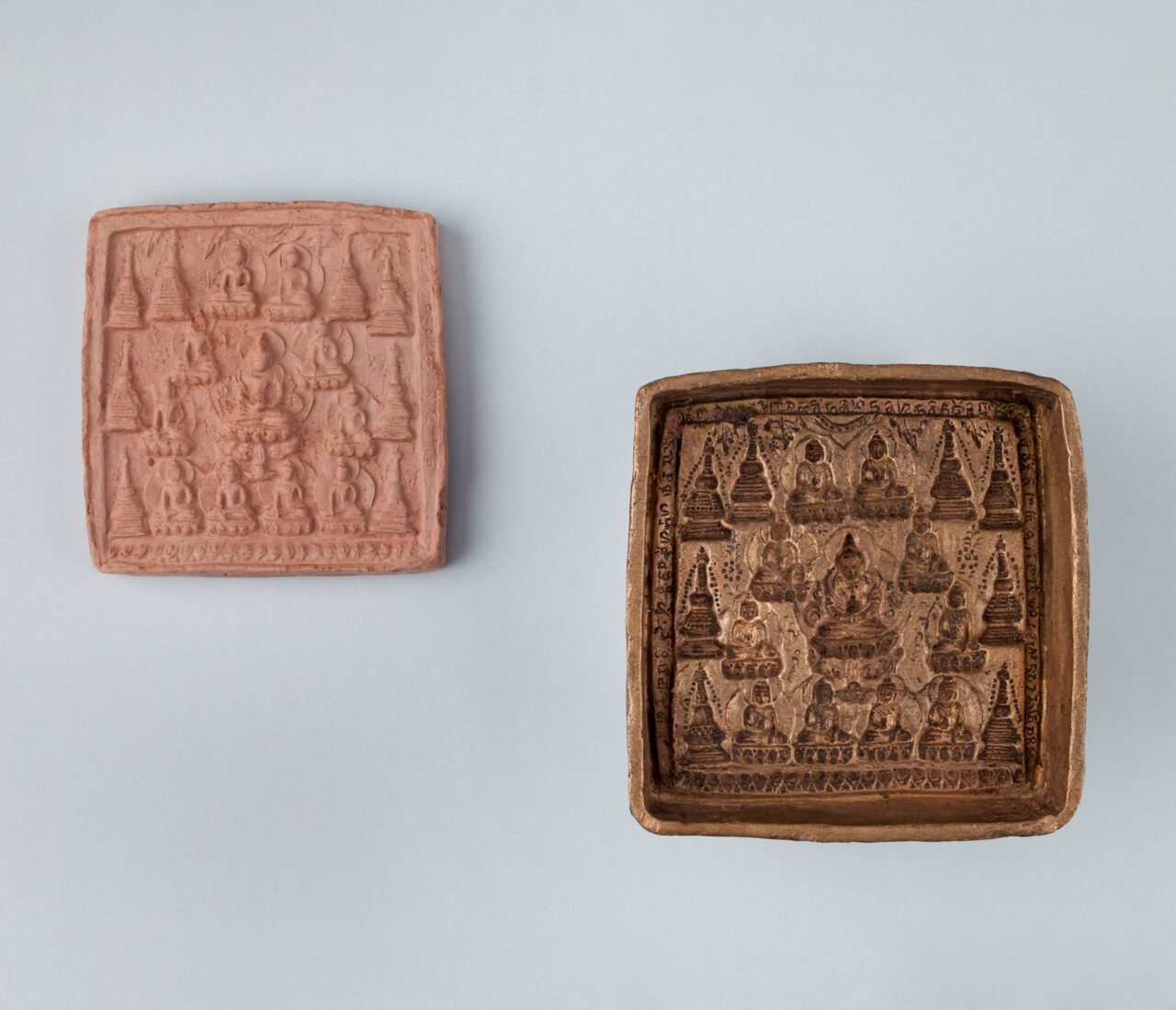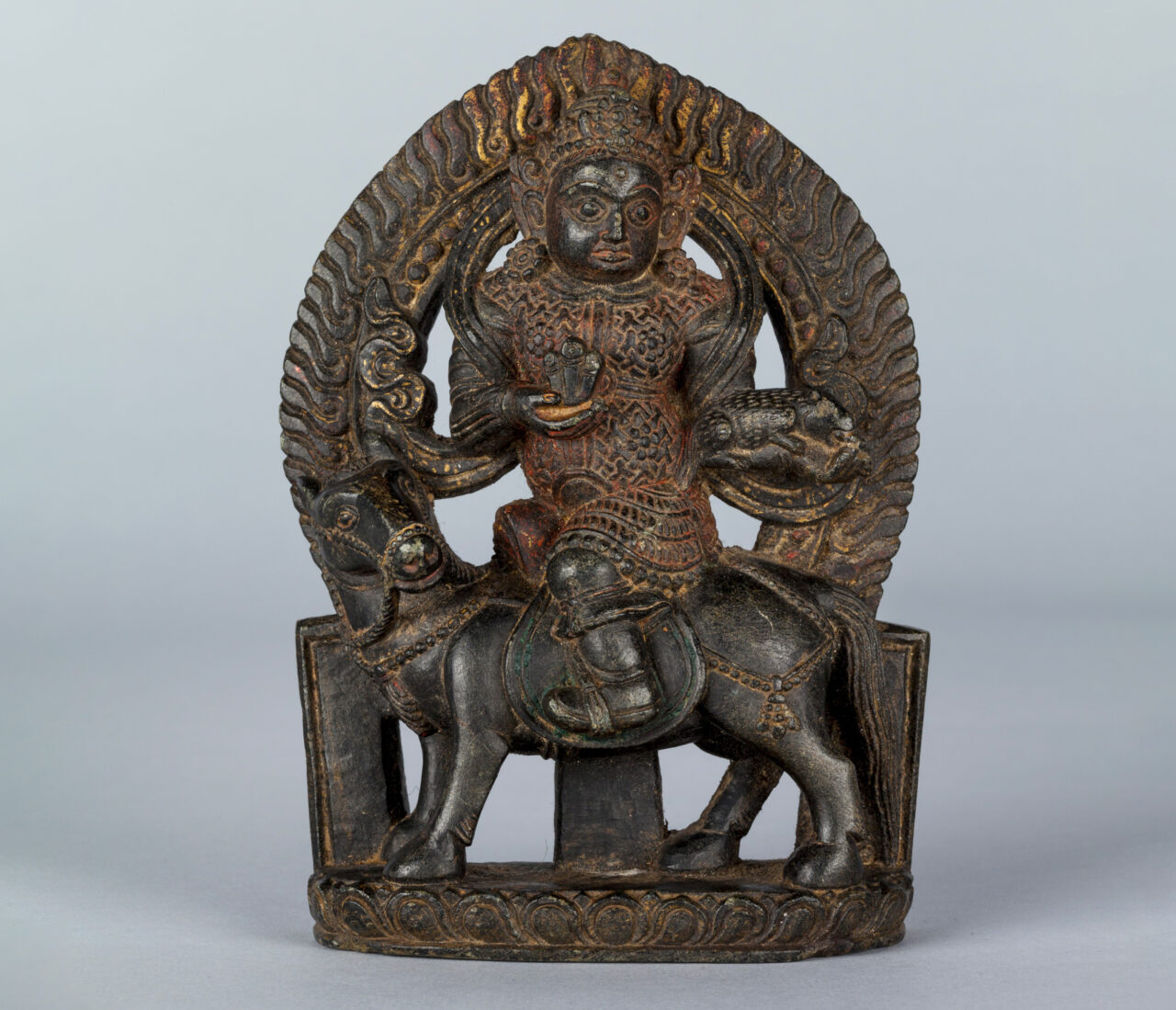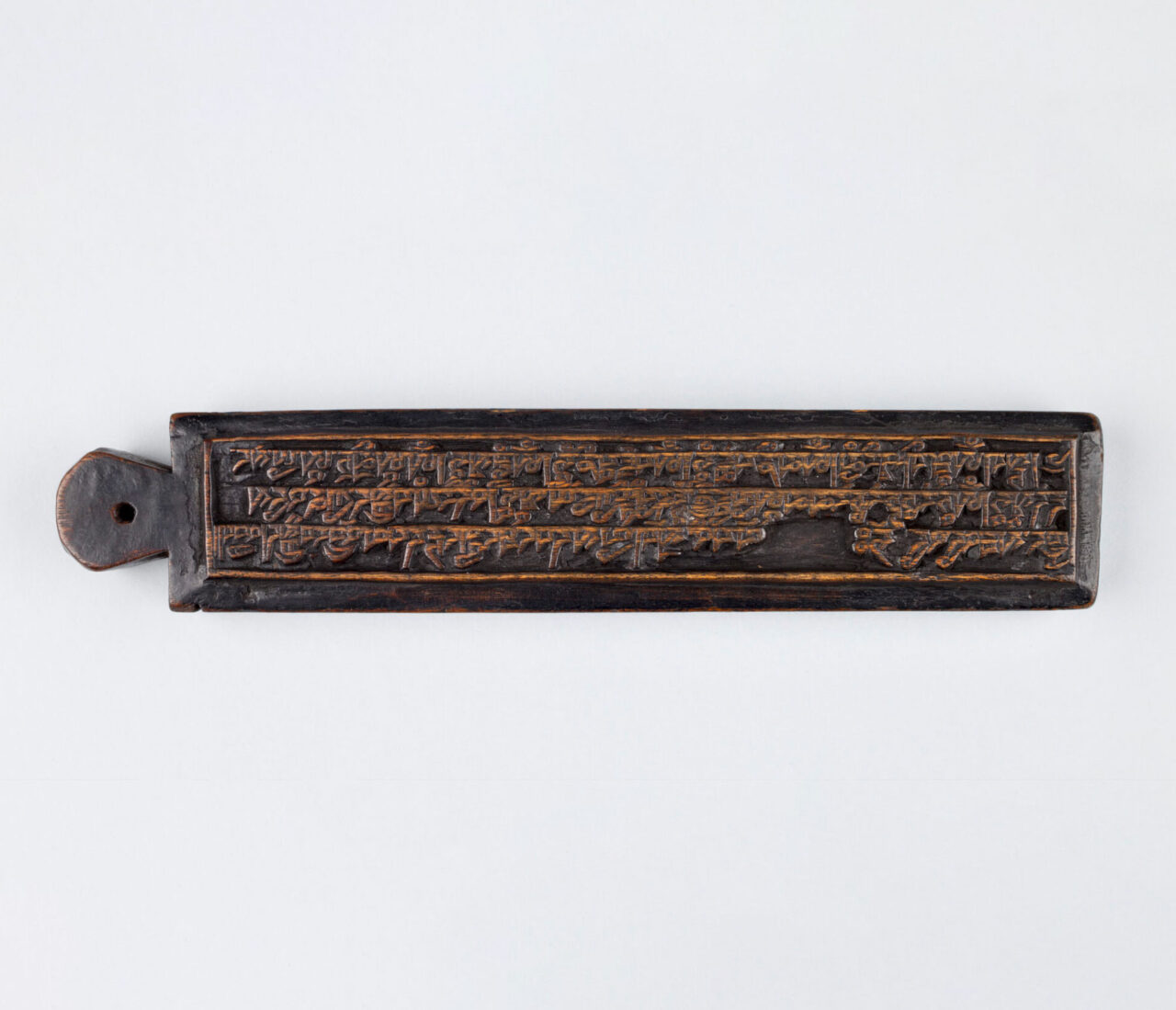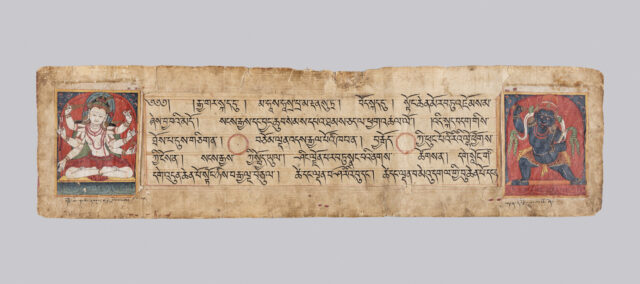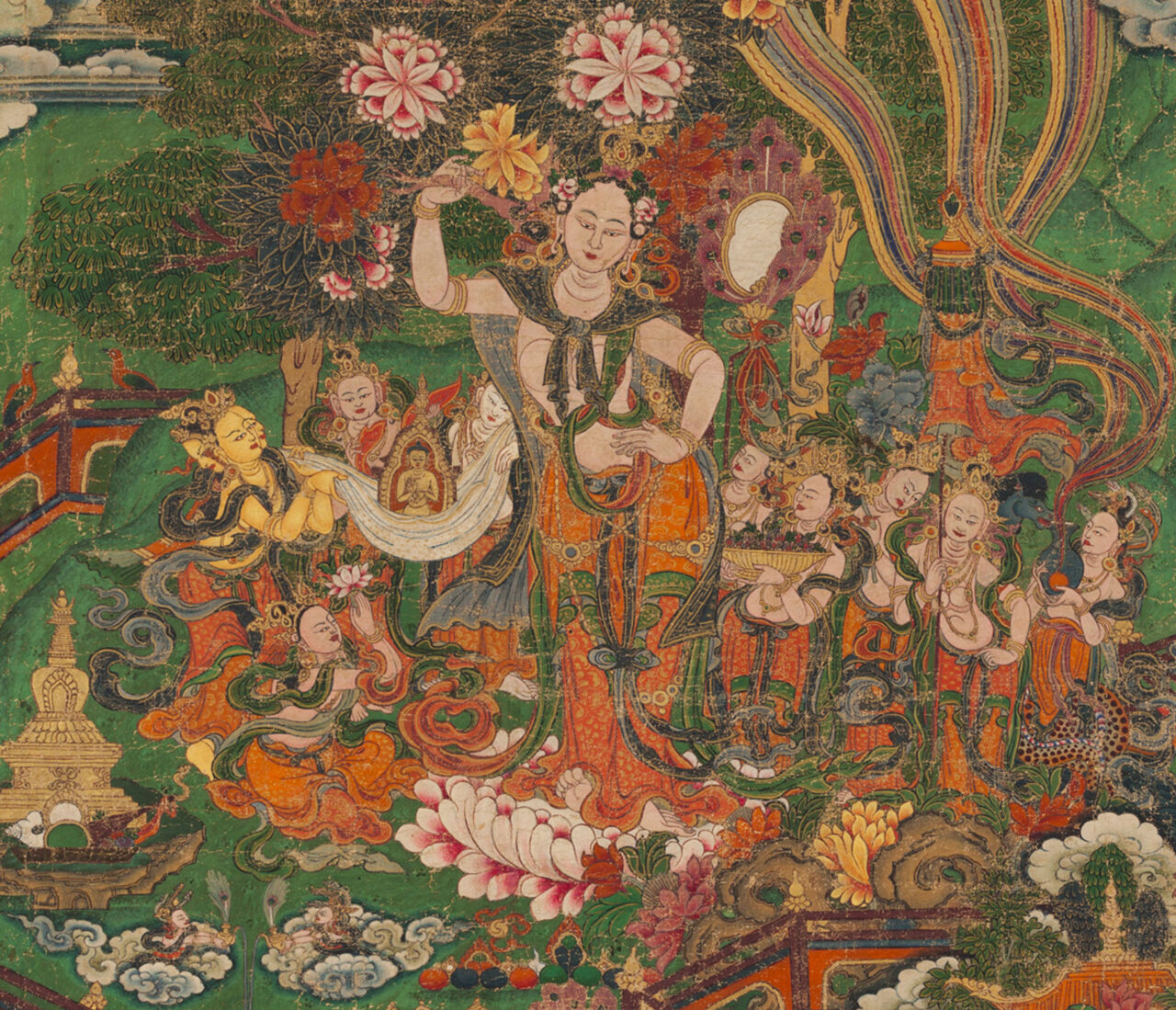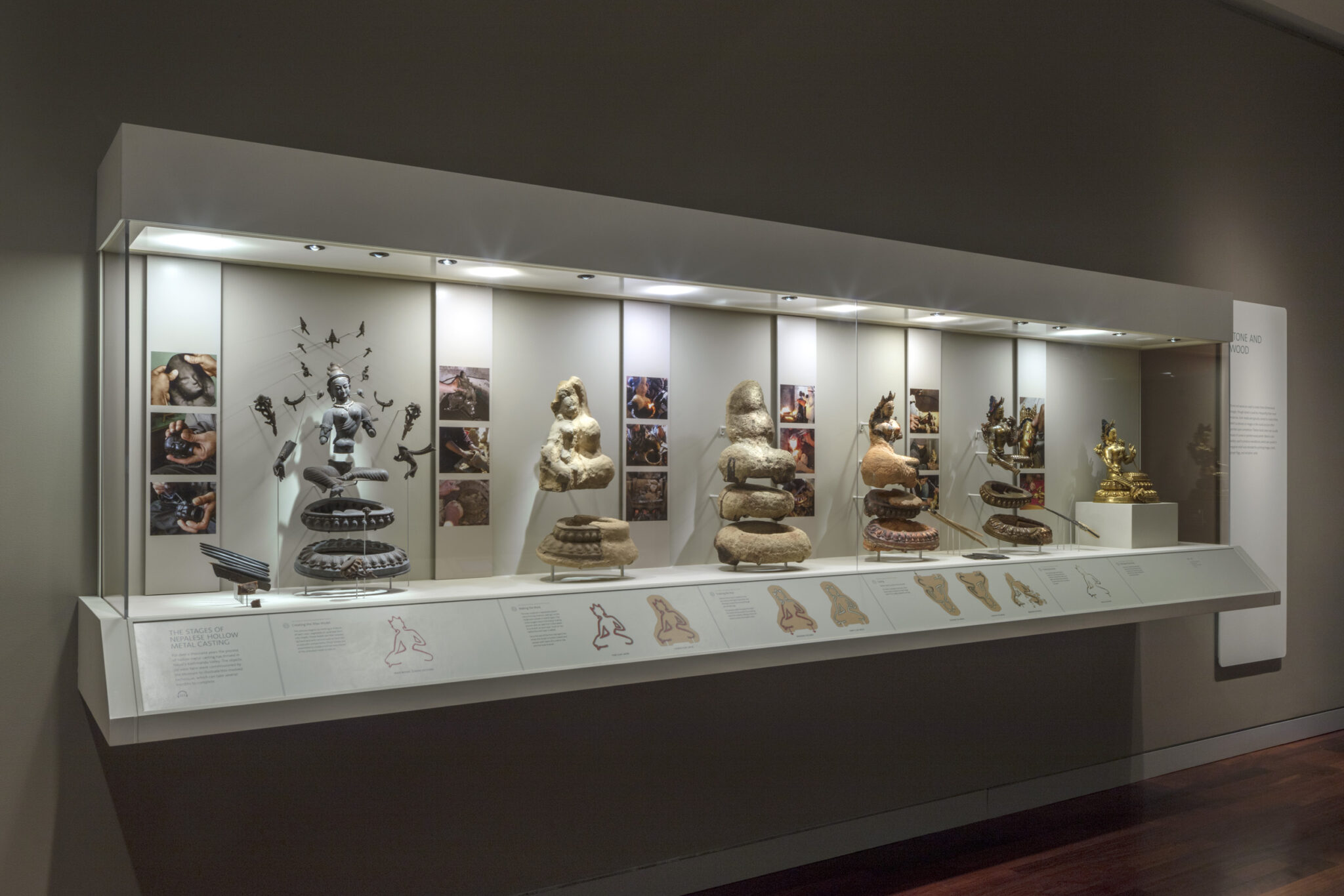
The lost-wax technique of hollow metal casting, perfected by Newar artists of Kathmandu Valley, has remained a thriving practice from ancient times to the present day.
Stage 1
Artisans start by creating a wax model. They melt a combination of beeswax, vegetable oil, and tree resin into sheets from which parts of the whole figure are molded. These pieces are put together to make a wax version of the figure.
Stage 2
They make the clay mold by coating the inside and outside of the wax figure with several layers of fine and coarse clay. The first layer, mixed with cow dung, is the most important for ensuring the best casting. This is the longest stage, as each layer must dry before the next one can be applied. The coarse clay is mixed with rice husks and applied in layers. When the clay mold has dried, the artisans make an opening at the base so the melted wax can be poured out and molten metal poured in.
Stage 3
The actual casting process begins by melting the wax figure and draining it out of the mold. Once drained of wax, the clay mold is baked, making it hard and ready to receive the molten metal.
Stage 4
Hot metal is poured into the mold. Once it cools, the artisans break the mold to reveal the metal sculpture inside.
Stage 5
They weld the rough metal statue to fix any casting imperfections, chisel it to reveal details, then buff and gild the surface. Each task requires specialized skills and is performed by several people.
Stage 6
Artists paint and decorate the sculpture with semiprecious stones. The statue is ready for consecration, the ritual by which the deity comes to inhabit the image.
The Rubin Museum of Art, "Lost-Wax Metal Casting," YouTube, June 26, 2023, 14:58, https://youtu.be/oKVUhV6Q3e8.
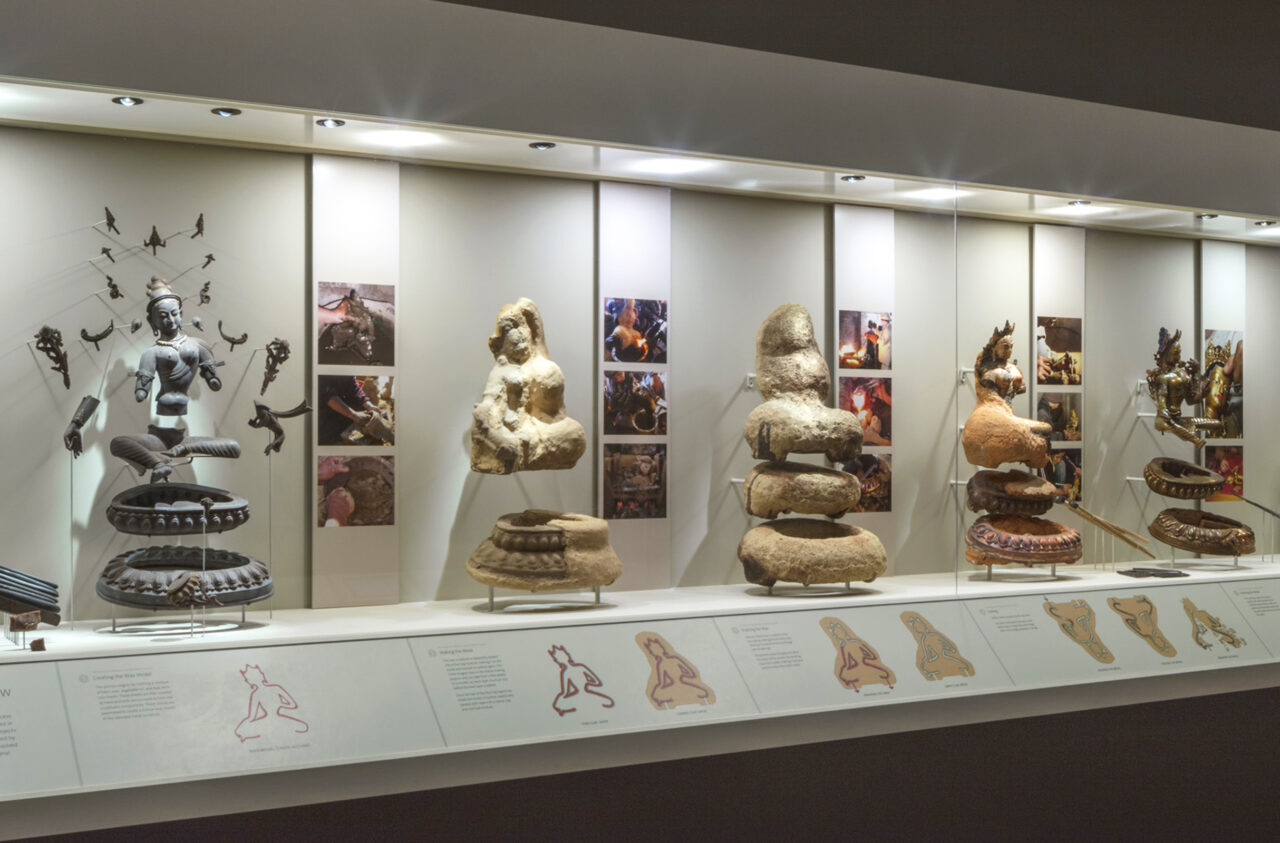
Art Making
Art making in Himalayan and Tibetan regions is largely religious in nature and takes a wide range of forms—from painting to lost-wax metal casting.
Explore theme